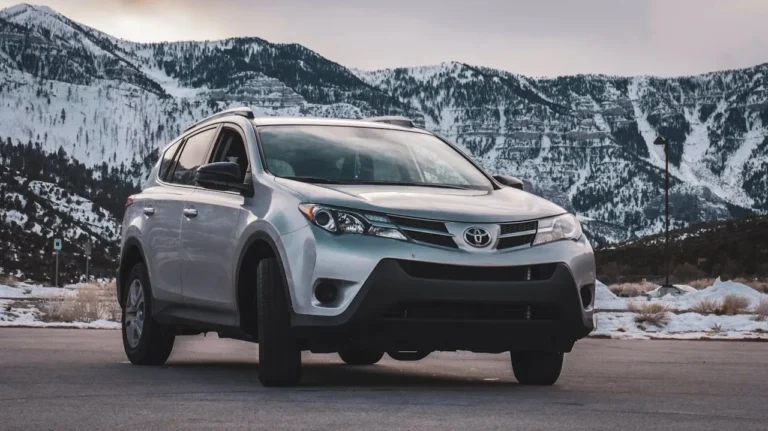
J.D. Power 2025 U.S. Initial Quality Study Reveals Small Gains in Vehicle Quality Amid Persistent Infotainment and Touchscreen Challenges
Despite the increasing complexity of new vehicles, the overall quality of cars and trucks in the United States has shown modest improvement, according to the 2025 U.S. Initial Quality Study℠ (IQS) by J.D. Power. The study, now in its 39th year, reveals that the number of problems reported by new-vehicle owners in the first 90 days of ownership has decreased slightly, with the industry average improving to 192 problems per 100 vehicles (PP100), down from 194 PP100 in 2024.
This incremental improvement in quality, however, masks diverging trends between vehicle segments. Premium brands saw a noteworthy improvement, reducing their problem count from 230 PP100 in 2024 to 203 PP100 in 2025—a 27-point gain primarily influenced by Tesla’s performance. On the other hand, mass market brands reported a slight uptick in issues, rising from 181 PP100 to 187 PP100. In the context of J.D. Power’s IQS scoring system, lower scores indicate better quality.
Infotainment Systems Continue to Frustrate Owners
Although infotainment quality has improved slightly—down by 1.9 PP100 from last year—it remains the most problematic vehicle category, with 42.6 problems per 100 vehicles. In fact, half of the top ten most common issues reported across the industry are related to infotainment systems.
Touchscreen interfaces are a growing source of dissatisfaction, particularly as more automakers replace traditional buttons and knobs with digital controls. Increasingly, non-audio functions—such as climate control, garage door operation, and even glove box access—are being relocated to digital touchscreens, complicating simple tasks and frustrating users.
While customers do find the larger touchscreens visually appealing, their functionality within the vehicle is an increasing source of frustration,” said Frank Hanley, senior director of auto benchmarking at J.D. Power. “Customers are having to tap and swipe through multiple screens to access key vehicle functions. These tasks can be overly complicated and distracting, especially while driving. Retaining dedicated physical controls for essential functions could significantly enhance the user experience.
Key Insights from the 2025 IQS
The 2025 study highlights a number of key trends and findings that shed light on the evolving dynamics of vehicle quality across segments, powertrains, and new model introductions.
Premium vs. Mass Market Quality Gap Narrows
Although premium vehicles typically feature more advanced technologies, they also introduce more defect- or malfunction-related problems than their mass market counterparts. While both segments report similar levels of design-related issues, premium vehicles—especially those from newer or non-traditional manufacturers—struggle more in areas such as exterior quality. On average, premium vehicles have 4.2 more problems per 100 vehicles in the exterior category compared to mass market vehicles.
Plug-in Hybrids Report Most Problems
One of the more striking findings in this year’s study is the relatively poor performance of plug-in hybrid electric vehicles (PHEVs), which now report more issues than both battery electric vehicles (BEVs) and traditional powertrains. PHEVs posted an industry-worst 237 PP100, compared to 212 PP100 for BEVs. Conventional gasoline vehicles (184 PP100) and hybrids (196 PP100) continue to outperform their electrified counterparts in initial quality.
Tesla contributed significantly to the improvement in BEV performance, reducing its problem count by an impressive 62 PP100 year-over-year. This shows how brand-level advancements can help lift entire segments.
New Model Launches Create Quality Headaches
New model introductions remain a major source of quality issues, with new launches averaging 203 PP100—the highest since the study was redesigned in 2020. In contrast, carryover models fared better with 190 PP100. Of the 18 newly launched models assessed in the study, only two outperformed their respective segment averages.
“Typically, we expect some balance between successful and problematic new model launches,” Hanley noted. “But this year, the launches are especially troubling.” However, the silver lining is that these new models, despite their higher problem counts, tend to require fewer repair visits than carryover vehicles, suggesting that many of the issues may be related to user experience or design rather than mechanical defects.
Cupholder Complaints Resurface as Consumer Habits Shift
As consumer preferences evolve, some seemingly trivial features are again drawing criticism—namely, cupholders. With more vehicle owners bringing reusable bottles and containers of varying shapes and sizes into their cars, traditional cupholder designs are proving inadequate. Owners increasingly expect their vehicles to accommodate a broad range of drinkware, and many are disappointed when they do not.
Study Scope and Methodology
The 2025 U.S. Initial Quality Study is based on responses from 92,694 purchasers and lessees of new 2025 model-year vehicles. These individuals were surveyed after 90 days of ownership, and the study incorporated real-world repair data from hundreds of thousands of service events reported to franchised dealerships. This year-round fielding and integration of traditional Voice of the Customer (VOC) responses with repair visit data give manufacturers earlier insights into quality trends and emerging issues.
The study evaluates vehicle quality across 10 categories: infotainment; features, controls and displays; exterior; driving assistance; interior; powertrain; seats; driving experience; climate; and an “unspecified” category used to capture repair-related issues. The survey instrument includes 227 VOC questions.
Top-Ranked Brands and Models
Lexus claims the top spot overall in initial quality, with a score of 166 PP100. In the premium category, Jaguar ranks second (175 PP100), followed by Genesis (183 PP100).
Among mass market brands, Nissan leads with 169 PP100, followed by Hyundai (173 PP100) and Chevrolet (178 PP100).
At the corporate level, General Motors Company garners the most model-level awards (five), ahead of Ford Motor Company (four awards) and Honda Motor Company (three awards). Among individual brands, Ford earns the most segment awards (four), followed by Chevrolet with three.
The highest-ranking models in their respective segments include:
- General Motors: Buick Encore GX, Cadillac XT5, Chevrolet Blazer, Silverado, and Tahoe
- Ford: Escape, F-150, Mustang, and Super Duty
- Honda: Acura Integra, Acura RDX, and Honda Odyssey
The Porsche 911 continues its legacy of excellence, achieving the best single model score in the study with just 116 PP100.
Plant Quality Awards
On the manufacturing side, BMW AG’s Graz plant in Austria, which builds the BMW Z4, receives the Platinum Plant Quality Award for achieving the fewest defects and malfunctions (design issues excluded).
Two Toyota plants in North America tied for the Gold Plant Quality Award: the Cambridge South plant in Ontario (Lexus RX) and the Georgetown 3 plant in Kentucky (Lexus ES). In the Asia-Pacific region, Toyota’s Tahara plant in Japan earned the Gold award for its production of the Lexus IS, LS, and NX models.
As the automotive industry continues its rapid shift toward electrification, connectivity, and digital interfaces, new challenges are surfacing in the realm of vehicle quality—particularly around user experience and software-driven functionality. While the modest improvement in initial quality scores is encouraging, the study clearly signals that automakers must balance innovation with intuitive design and physical usability.
Manufacturers that invest in simplifying touchscreen operations, accommodating changing consumer habits, and smoothing the launch of new models are more likely to maintain strong customer satisfaction and brand loyalty in an increasingly competitive market.







